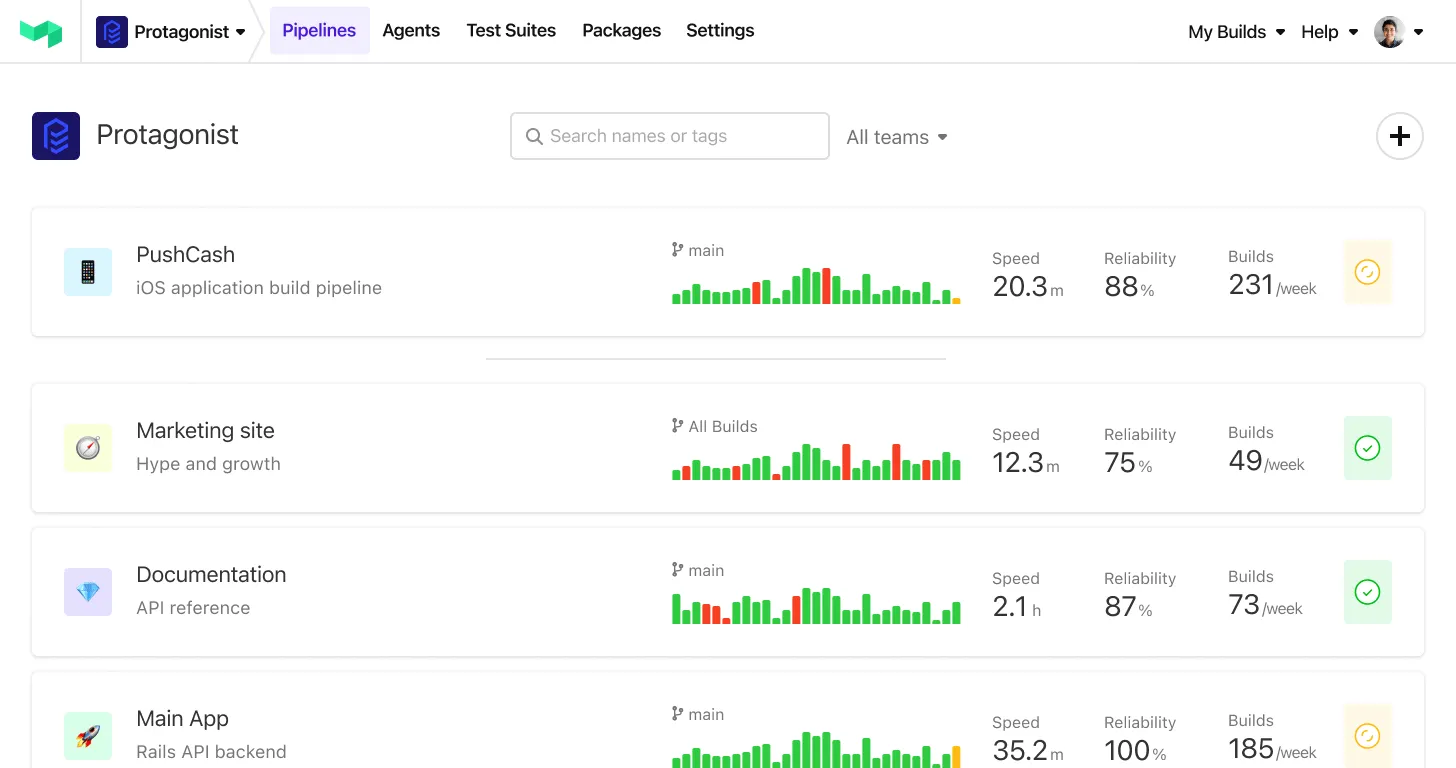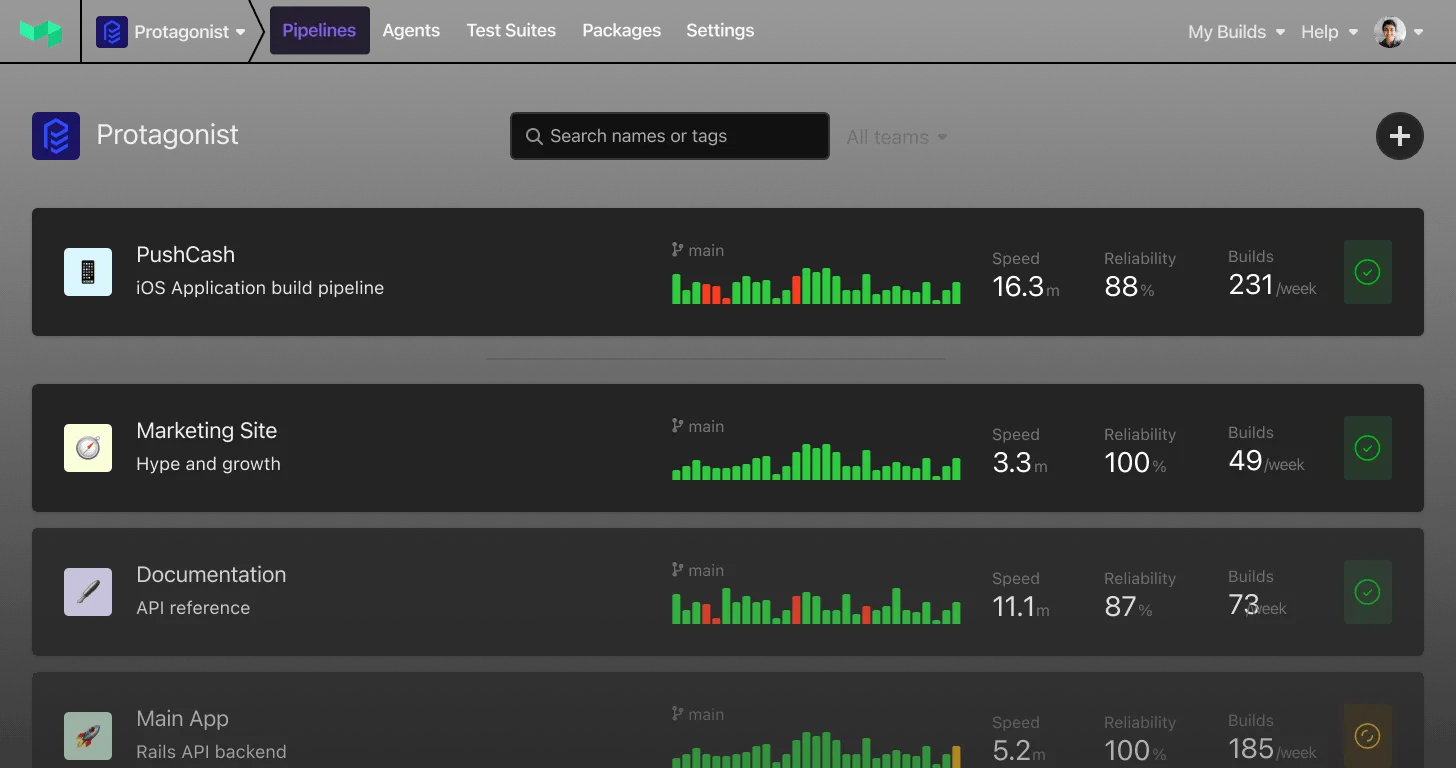
Continuous Integration (CI) promises faster feedback and more reliable deployments. In practice, they can deliver the opposite: slow build times, brittle configurations, and hours spent debugging YAML files. These costs aren't immediately obvious when you first adopt a CI platform, but they accumulate over time in ways that impact developer productivity.
This article examines the real costs of CI systems, from platform lock-in to undocumented behaviors, and explores what can make these systems expensive to maintain.
The cost of platform-specific features
Most teams start with straightforward CI needs: run tests on pull requests, merge when tests pass, deploy on main branch updates. CI platforms offer features that seem to simplify these workflows, but using them creates dependencies that are expensive to change later.
Take merge queues as an example. GitHub Actions requires both pre-queue and in-queue CI runs to pass, but the documentation doesn't clearly explain how to configure this. The working solution involves naming jobs identically in both phases so the platform treats them as the same check. Without this, you end up with status checks that wait indefinitely or code that merges despite failing queue checks. This information isn't in the official docs, you find it in Stack Overflow posts from other engineers who figured it out through trial and error.
This pattern repeats throughout platform-specific features. Some GitHub Actions require custom tokens instead of the default GITHUB_TOKEN, with no clear indication why until you find an issue thread discussing it. When calling workflows from other workflows, secrets don't inherit automatically, causing failures that are hard to diagnose because the workflows work fine individually.
Each of these issues can cost hours to debug. The feedback loop of making a change, commit, push, and wait for CI makes iteration slow.
The YAML problem
YAML has become the standard configuration language for CI systems, but it's not a great fit for defining build logic. There's no type checking, limited IDE support, and syntax errors only surface after you push your changes and wait for CI to run.
This creates an absurd debugging workflow: many teams maintain test repositories where they push commits repeatedly with messages like "wip" or "test ci" until something works. We've accepted a development experience for CI that we'd never tolerate for application code.
The core issue is putting too much logic in YAML. A useful principle: if a CI step requires more than a one-liner, put it in a script in your repository instead. This makes the logic testable, gives you proper editor support, and works regardless of which CI platform you're using.
The productivity cost is significant. If every engineer on a team loses hours each month to CI debugging, multiply that across an organization, the cost becomes substantial.
Container complications
Running CI jobs in containers introduces a new set of problems. File permissions are a common issue: containers build files as one user, the CI runner uses different uid/gid values, and suddenly neither the container nor the host can access the files properly.
Environment differences cause subtle breakage. A dev container might install tools to /home/ubuntu, but some CI systems change $HOME to /github/home, breaking any tool that relies on files in the home directory. Caching actions don't work inside containers without vendor-specific workarounds. Some platforms don't let you override container entrypoints or mix containerized steps with non-containerized ones.
Tools that promise to run CI workflows locally help, but they don't fully replicate the CI environment. Their Docker images differ from actual CI runners, events don't match exactly, and Git checkout behavior diverges. When something works locally but fails in CI (or vice versa), you're back to the commit-push-wait debugging cycle.
The cost of platform changes
CI platforms backed by venture capital carry a specific risk: if the business model fails, your entire build system needs replacement. Earthly's discontinuation reminded many teams of this reality.
Each platform has its own limitations. GitHub Actions has a 10GB cache limit. GitLab has different constraints. CircleCI has its own quirks. Jenkins offers flexibility at the cost of significant maintenance overhead.
This suggests a different approach: design your build system to be independent of the CI platform. Your builds should work locally, on any CI system, and remain portable across platforms. This means investing in tools like Make, Just, Nix, or Bazel that encapsulate build logic outside the CI system itself.
When your CI configuration reduces to "run this command," switching platforms becomes straightforward. You're treating the CI platform as simple orchestration rather than as the build system itself.
The real costs
The hidden costs of CI accumulate in several ways:
Time spent debugging. Engineers lose hours debugging CI configurations through commit-push-wait cycles. This time adds up across teams and projects.
Rewrite costs. Platform-specific features create lock-in. When you need to switch platforms or when a platform changes significantly, you face a substantial rewrite.
Security complexity. Opaque permission models and unclear documentation make it difficult to configure security correctly. This creates both risk and additional time spent trying to understand the security implications of different configurations.
Slow feedback loops. When CI takes too long to run or requires multiple iterations to get working, it slows down development. The "just push and see if it works" approach to CI configuration is a symptom of this problem.
Lost knowledge. Critical information exists in scattered forum posts and issue threads rather than comprehensive documentation. Each team rediscovers the same problems and solutions.
The Buildkite approach
Buildkite takes a fundamentally different approach to CI/CD that addresses many of the limitations we've discussed. Rather than forcing teams to choose between vendor lock-in with managed runners or the operational burden of self-hosting everything, Buildkite offers a hybrid model that combines the convenience of a SaaS platform with the control and security of running builds on your own infrastructure. This architecture, combined with official SDKs for type-safe pipeline authoring, enables teams to build sophisticated CI/CD workflows that scale with their needs while keeping sensitive code and credentials within their own security perimeter.
Hybrid architecture
Buildkite's technical architecture fundamentally differs from other CI platforms. Most systems follow either a fully managed model (GitHub Actions, CircleCI) where builds run on vendor-provided cloud runners, or a fully self-hosted model (Jenkins) where teams manage both orchestration and execution. Buildkite splits these concerns with a hybrid architecture that provides a SaaS control plane while execution happens on customer-controlled infrastructure.
The Buildkite platform handles orchestration, scheduling, the web UI, APIs, webhooks, and integration management. Lightweight agents run on customer infrastructure: AWS EC2 instances, Google Cloud VMs, Azure resources, on-premises servers, Kubernetes clusters, or even laptops. These agents poll Buildkite's API over HTTPS (requiring no inbound firewall rules), accept jobs matching their queue configuration, execute build commands, stream logs back to the platform, and upload artifacts. Critically, source code and secrets never leave customer infrastructure. They remain entirely within the customer's environment and are never seen by Buildkite's platform.
Official SDKs for type-safe pipeline authoring
While dynamic pipelines can use any language with a YAML library, Buildkite provides official SDKs for TypeScript, Python, Go, and Ruby that make pipeline authoring more ergonomic and type-safe. All four SDKs are auto-generated from Buildkite's official pipeline schema, ensuring they stay synchronized with the platform and provide consistent APIs across languages. They're maintained in a unified monorepo and published simultaneously with matching version numbers.
The SDKs provide native-language classes and functions representing pipeline steps—command steps, wait steps, trigger steps, block steps, and more. Developers instantiate pipeline objects, programmatically add steps using normal language features like loops and conditionals, and serialize to YAML or JSON format.
const { Pipeline } = require("@buildkite/buildkite-sdk");
const pipeline = new Pipeline();
pipeline.addStep({
command: "echo 'Hello, world!'",
});
console.log(pipeline.toJSON());
console.log(pipeline.toYAML());Conclusion
The costs of CI aren't primarily about the monthly bill from your CI provider. They're about the accumulated time spent on configuration, debugging, and rewrites. They're about the complexity that comes from platform-specific features and the productivity lost to slow feedback loops.
These costs are often invisible until you try to change something significant—switching platforms, improving build times, or debugging a subtle issue. By that point, you've already accumulated substantial technical debt.
The solution isn't finding the perfect CI platform. It's designing your build system to be independent of any particular platform, treating CI as simple orchestration of builds that work anywhere. This requires more upfront investment in build tooling, but it pays off in portability, reproducibility, and reduced debugging ti

